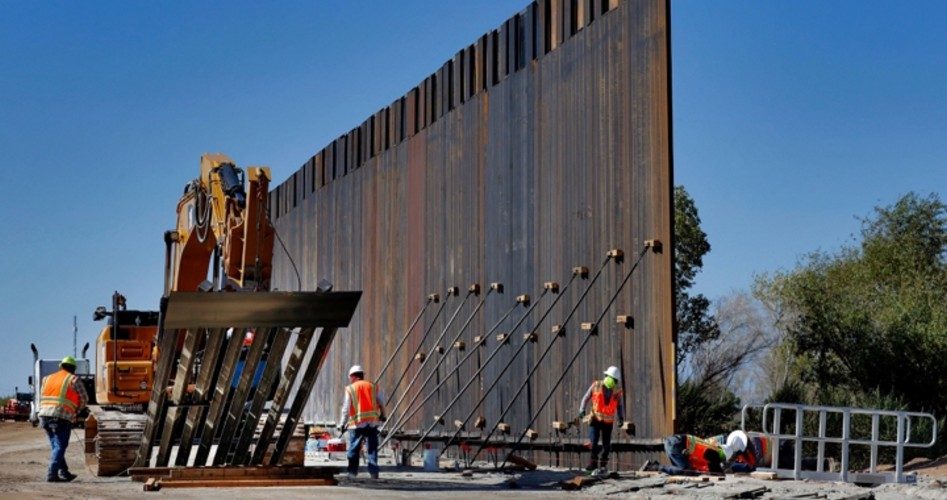
U.S. Customs and Border Protection (CBP) posted a news item on its website on March 16 stating that CBP, in partnership with the U.S. Army Corps of Engineers, has awarded a $175,577,000 contract to construct approximately 15 miles of a new border wall system within the Border Patrol’s Rio Grande Valley (RGV) Sector located in Starr County, Texas.
CBP plans to install four noncontiguous sections of 30-foot-tall barriers. Construction is slated to begin as early as this year, and will include a 30-foot tall steel bollard wall, all-weather roads, enforcement cameras, lighting, and other technology in order to “create a complete enforcement zone.”
The project is funded by CBP’s Fiscal Year (FY) 2018 and 2019 appropriations.
The report noted that the RGV sector is the busiest in the nation and, for the FY to date, accounts for approximately 25 percent of the illegal-alien apprehensions and ranks first in seized cocaine, methamphetamine, and marijuana along the southwest border.
CBP continues to implement President Trump’s Executive Order 13767 — also known as Border Security and Immigration Enforcement Improvements — taking steps to “expeditiously” plan, design, and construct a physical wall to achieve operational control of the southern border, the report noted.
The wall construction will start this year “pending availability of real estate, in locations where no barriers currently exist,” CBP said.
The Daily Caller cited Border Patrol Chief Rodney Scott, who on March 16 provided an update on the status of wall construction along our southern border. So far, 139 miles of wall have been completed, and another 200 miles of wall are under construction. The administration has set a goal of 400 completed miles by the end of 2020.
Difficulty in getting Congress to appropriate sufficient funding for the borders wall’s construction has hampered such projects and cause President Trump to engage in end-run tactics, moving money around from other departments in order to get some construction done. A year ago, House Democrats refused to approve a bill that included the $5.7 billion Trump wanted for the wall, and Congress approved just $600 million for 33 miles of new barriers in the Rio Grande Valley. So Customs and Border Protection moved ahead with building what had already been funded.
As we reported earlier this month, 19 states have joined together to sue the Trump administration over its recent diversion of $3.8 billion in defense funding for the border wall.
Trump announced that he would use Department of Defense (DOD) funds to construct the border wall because Congress had not allocated the full amount he had asked for in the federal budget.
The Defense Department informed Congress this month that it would make a transfer of an additional $3.8 billion for the wall by using money from weapons programs.
As we noted in that March 2 article concerning the constitutionality of reallocating military funds for use on wall construction, “The president’s move certainly falls within his constitutional authority as commander-in-chief. Using military funds for the wall is not even, as many would classify it, “diverting funds,” as the wall’s very function is military in nature — protecting the national border from invasion.”
Photo: AP Images
Warren Mass has served The New American since its launch in 1985 in several capacities, including marketing, editing, and writing. Since retiring from the staff several years ago, he has been a regular contributor to the magazine. Warren writes from Texas and can be reached at [email protected].
Related articles:
19 States Sue to Stop Use of Military Funds for Trump Border Wall
Don’t Just Blame Pelosi; Lack of Border Wall Funding Is Bipartisan
CBP: First New Border Wall Project to Begin in April
Customs and Border Protection Working on Upgrading Border Wall in San Diego
CBP To Use Existing Funds to Begin Border Fences and Walls In Texas


